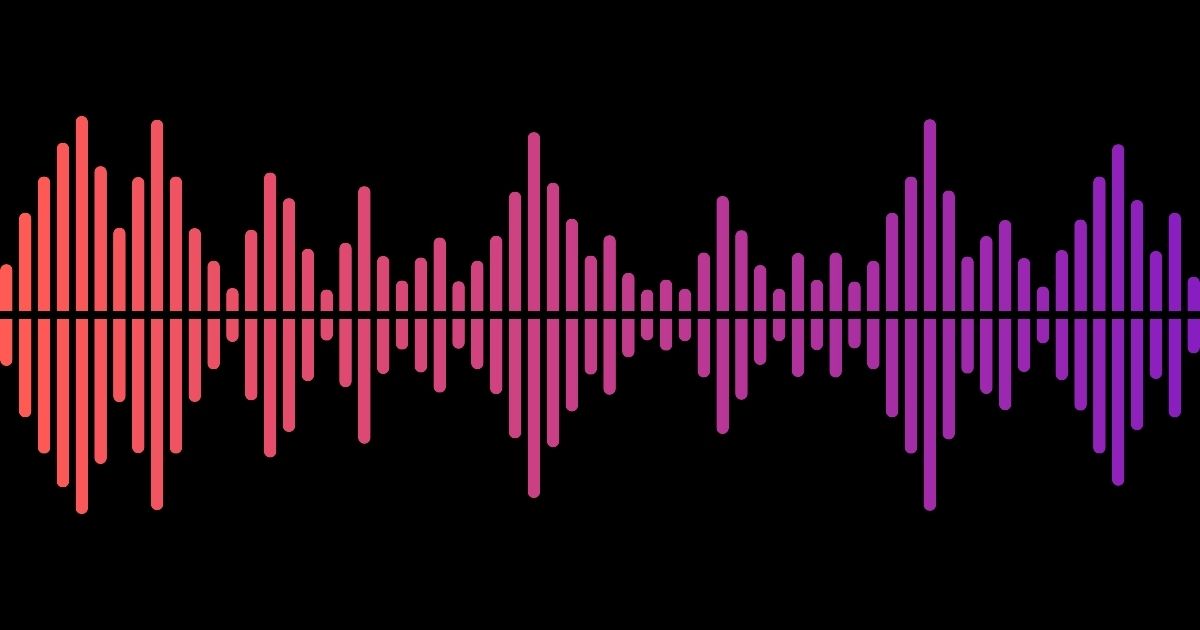Podcast Editing: Step-By-Step Guide and Best Practices

Welcome to the ultimate Guide to podcast dditing! Whether you're a seasoned podcaster or just starting, mastering the art of podcast editing is crucial for delivering high-quality content.
In this guide, we'll walk you through the entire process, share some expert tips, and introduce you to tools like SummarAIze that can help you repurpose your podcast content effortlessly.
Why You Should Edit Your Podcast
Podcast editing is essential for creating engaging and professional-sounding episodes. Good editing not only improves the listening experience but also helps you connect better with your audience.
Podcast Editing 101
Podcast editing involves refining your audio recordings to remove mistakes, add effects, and ensure a smooth flow. This can range from basic editing, like trimming unwanted sections, to advanced features such as sound design and mastering.
Effective editing can make the difference between a mediocre podcast and a standout show. It's important to understand the different podcast editing software available, such as Adobe Audition, which offers a wide range of audio editing tools suitable for both beginners and experienced editors.
Step-by-Step Guide to Editing a Podcast
To create a high-quality podcast, following a structured editing process is essential. Here, we'll guide you through each step, from organizing your files to exporting your final episode, ensuring a professional and engaging outcome.
Step 1: Organize Your Audio Files
- Why? Keeping your files organized saves time and reduces frustration during editing.
- Tip: Create folders for each episode and use clear naming conventions for your files.
Step 2: Familiarize Yourself with Your Editing Software
- Why? Knowing your tools helps you edit more efficiently.
- Tip: Spend some time learning the features of your chosen Digital Audio Workstation (DAW) or audio editor. Popular options include Adobe Audition, which offers advanced features for editing podcasts and improving sound quality.
Step 3: Listen Through Your Raw Recording
- Why? Identifying sections to keep, cut, or rearrange helps you plan your edits.
- Tip: Take notes while listening to streamline the editing process.
Step 4: Trim the Beginning and End
- Why? Removing dead air and pre/post-show chatter keeps your podcast professional.
- Tip: Use the “top and tail” technique to quickly trim the edges.
Step 5: Make Content Edits
- Why? Cutting out long pauses, mistakes, or off-topic tangents enhances the listening experience.
- Tip: Be ruthless but fair—keep the content engaging and concise.
Step 6: Arrange Your Audio Clips
- Why? Ensuring the right order of segments keeps your narrative clear.
- Tip: Use your DAW’s drag-and-drop feature to easily rearrange clips.
Step 7: Add Intro/Outro Music and Sound Effects
- Why? Music and effects enhance the tone and professional feel of your podcast.
- Tip: Choose royalty-free music and sound effects to avoid copyright issues. Adding background music and sound effects can improve the overall audio experience and make your podcast more engaging.
Step 8: Adjust and Balance Audio Levels
- Why? Balanced audio levels prevent listener fatigue and ensure clarity.
- Tip: Use compressors and equalizers to adjust levels. Ensuring consistent sound across all audio tracks is crucial for a pleasant listening experience.
Step 9: Apply Audio Processing
- Why? Processing like noise reduction and EQ can significantly improve audio quality.
- Tip: Use presets in your DAW as a starting point. Noise reduction tools are particularly useful for removing background noise and unwanted sounds.
Step 10: Normalize the Overall Volume
- Why? Normalizing volume ensures consistent playback across different devices.
- Tip: Aim for a loudness level of -16 LUFS for stereo files.
Step 11: Listen Through Your Edited Podcast
- Why? A final review ensures no mistakes were missed.
- Tip: Listen with headphones to catch subtle issues and ensure a natural flow of the conversation.
Step 12: Export Your Finished Episode
- Why? Proper export settings ensure your podcast sounds great on all platforms.
- Tip: Export in high-quality MP3 format (192 kbps or higher). Make sure the finished product meets the standards of various podcast platforms.
Best Podcast Editing Tips
Enhance your editing workflow with these expert tips. From using keyboard shortcuts to creating a consistent editing style, these tips will help you produce professional-sounding podcasts efficiently.
- Use Keyboard Shortcuts: Speed up your workflow by mastering keyboard shortcuts in your editing software.
- Create Templates: Save time with project templates that include your standard intro, outro, and effects.
- Implement a "Click-Edit" Method: Click at edit points while listening, then go back and make edits in a separate pass.
- Use Markers or Labels: Easily navigate your audio by placing markers at key points.
- Apply Batch Processing: Use batch processing to apply effects to multiple clips simultaneously.
- Maintain Consistency: Establish and stick to a consistent editing style.
- Create a Style Guide: Develop guidelines for your podcast's sound, including preferred music and effects.
- Use Crossfades: Smooth out transitions with short crossfades to avoid abrupt cuts.
- Monitor Levels with Headphones: High-quality headphones help you catch subtle audio issues.
- Take Breaks: Rest your ears periodically to maintain a fresh perspective.
- Collaborate with Others: Have someone else review your edited podcast before publishing.
- Keep Original Files: Always back up your raw recordings for future revisions. This is especially important when handling hours of audio and large projects.
Other Ways to Improve Your Podcast
Improving your podcast isn't just about editing. Using good equipment, effective software, and strategic distribution can elevate your show significantly. Let's explore these aspects in detail.
Use Good Equipment and Software:
Invest in quality microphones, headphones, and recording equipment to enhance audio quality. Using a pop filter can also help reduce plosive sounds and improve sound quality.
Explore various podcasting software options for recording and editing, such as Adobe Audition and other user-friendly interfaces. These tools can significantly enhance your production process by providing advanced features and powerful tools for audio editing.
Distribute Your Content Effectively:
Promote your podcast across multiple platforms to reach a wider audience. Consider creating a video podcast to expand your reach and engage more listeners.
Use SummarAIze to automate the process of repurposing podcast content into blogs, social media posts, and more, ensuring your podcast reaches its maximum potential.
With SummarAIze, you can also easily create show notes, generate timestamps, and produce engaging content tailored to different platforms automatically with AI.
Final Thoughts on Podcast Editing
Editing is a crucial part of podcast production that enhances the quality and professionalism of your episodes. By following the steps and tips outlined in this guide, you can create a polished podcast that stands out.
Additionally, leveraging tools like SummarAIze can help you maximize the value of your content through effective repurposing.
Podcast Editing FAQ
How do you edit a podcast?
Editing a podcast involves several steps. First, organize your audio files and import them into your editing software.
Next, listen through your raw recording and take notes on sections to keep, cut, or rearrange. Trim the beginning and end to remove dead air, then make content edits by cutting out mistakes, long pauses, or off-topic tangents.
Arrange your clips in the desired order, add intro/outro music and sound effects, and adjust audio levels for consistency.
Finally, apply audio processing like noise reduction, equalization, and compression before exporting the finished episode.
Is editing a podcast hard?
Editing a podcast can be challenging, especially for beginners. However, with practice and the right tools, it becomes easier.
The complexity depends on the quality of the original recording, the level of editing needed, and the software used.
Using user-friendly interfaces and tools like Descript or Adobe Audition can simplify the process significantly.
What do podcasters use to edit videos?
Podcasters use video editing software like Adobe Premiere Pro, Final Cut Pro, FlexClip, and DaVinci Resolve to edit video podcasts. These tools offer advanced features for cutting, trimming, adding effects, and synchronizing audio and video tracks. Some podcasters also use software like Riverside.fm for both audio and video editing.
Do podcasts require editing?
Yes, podcasts typically require editing to improve sound quality, remove mistakes, and ensure a smooth flow. Editing helps create a professional and engaging listening experience by removing background noise, balancing audio levels, and adding music or sound effects.
If I use an editor, how much will it cost to edit a podcast?
The cost of hiring a podcast editor can vary widely based on their experience and the complexity of the work.
On average, you can expect to pay between $50 to $200 per hour of audio. Some podcast production companies offer package deals that can range from $500 to $1,500 per episode, depending on the services provided.
How can I edit my podcast online for free?
You can edit your podcast online for free using tools like Audacity, GarageBand, and Descript. These tools offer basic editing features such as cutting, trimming, and adding effects. While free versions may have limitations, they are sufficient for many podcasters, especially beginners.
Can I edit a podcast on an iPhone?
Yes, you can edit a podcast on an iPhone using apps like GarageBand, Ferrite Recording Studio, and Adobe Audition. These apps offer mobile-friendly interfaces and a range of editing features, allowing you to cut, trim, and process audio directly on your device.
Can you edit a podcast after publishing?
Yes, you can edit a podcast after publishing. However, the process involves editing the original audio file and re-uploading it to your hosting platform. It's important to update any distribution channels to ensure listeners receive the revised version.
What's the best way to edit a podcast quickly and maintain quality?
To edit a podcast quickly while maintaining quality, use a structured workflow and efficient tools. Start with a well-organized recording, use keyboard shortcuts, and apply batch processing where possible.
Tools like Descript and Adobe Audition offer features like noise reduction, automatic transcription, and text-based editing that can speed up the process while ensuring high-quality results.
How long does it take to edit a one-hour podcast?
Editing a one-hour podcast can take anywhere from 2 to 6 hours, depending on the complexity of the edits required. Factors such as the number of edits, the quality of the original recording, and the editor's experience level all play a role in the time needed. Using templates and efficient workflows can help reduce editing time.
Should I edit my own podcast or use a podcast editor?
Deciding whether to edit your own podcast or hire a podcast editor depends on your budget, time, and editing skills.
Editing your own podcast can save money and give you control over the final product.
However, hiring a professional editor can save time and ensure a higher-quality result, especially if you lack experience or technical skills.
Turn your audio and video content into 100s of assets in minutes
With SummarAIze, you no longer have to repurpose your content manually.
Use our AI to 10x content you've already produced and help distribute it across multiple channels.
Related articles

Podcast Marketing: Proven Strategies to Grow Your Audience in 2024

Podcast Name Ideas: Tips, Frameworks, and Examples

